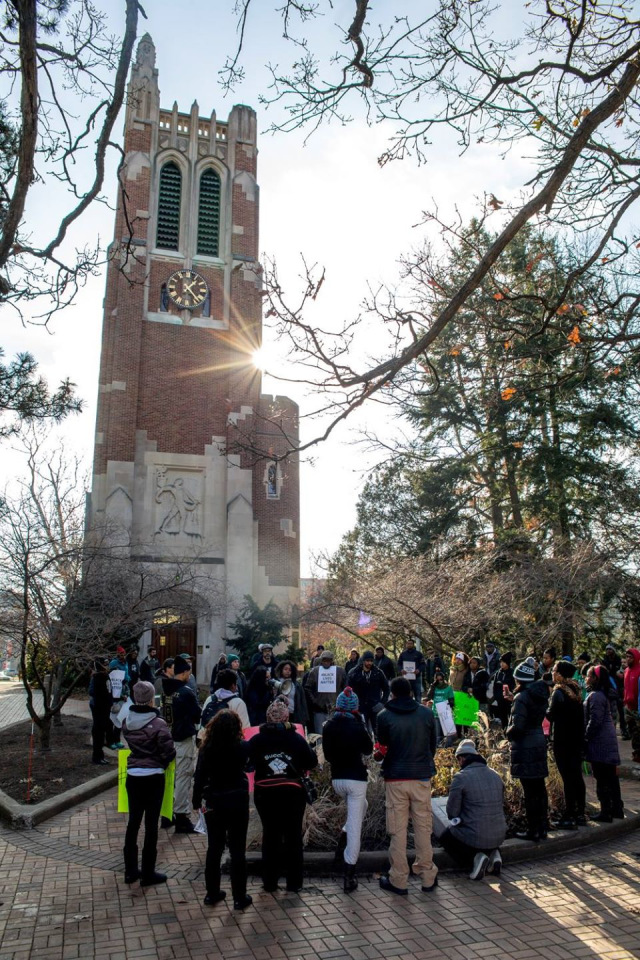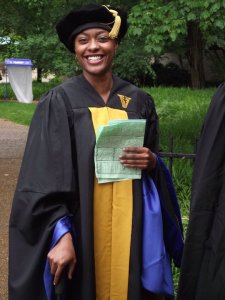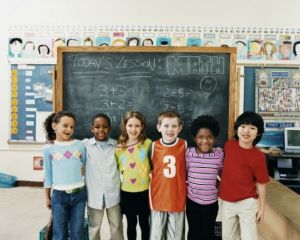I’m so glad the semester is over. Yes, I have the usual complaints about too much grading, sickly students, and overall fatigue. But this year, this fall, my gratitude for a winter break has more to do with my emotional well-being than my physical.
My soul is tired.
Like many campuses around the nation, my college was not immune to racial tension, student protests, and faculty ignorance. In fact, because we are such a small campus (only 2200 undergrads and approximately 180 faculty), these issues felt exponentially larger than they might have felt at my graduate alma mater, Vanderbilt University.
On small campuses, the few people of color (student, staff, administration, and faculty) are highly visible. I can’t hide in my office. I can’t pretend to not know what’s happening on campus. I can’t feign ignorance of students’ emotional responses to hate speech because it would be more convenient for my professional and personal life if I didn’t have to engage such complex issues.
I’m not saying I would choose those things if I could, but it sure would be nice to have a choice. Instead, I am forced to engage in the following types of conversations with white colleagues repeatedly:
I am on the Diversity and Equity Advisory Board this year. It’s my official committee assignment (which I chose after not winning enough faculty votes to be on our governing board or our curriculum committee). The work of the DEAB is still a bit nebulous, but one thing that is not included is educating my fellow committee members about why issues of diversity matter to everyone and should be included in our “strategic plans”.
The chair of this committee is a white woman (not from the US) who’s been at the college for over 10 years. She is in the math department so in my naïve estimation, as a minority in her discipline I thought she’d have a better understanding of what our committee should actually be doing. I was wrong.
To her credit, she asked to meet with me to get my perspective on just that. I told her that we need to focus on structural issues related to inequities. I told her we need to create some standardization across departments in faculty hiring practices, diverse curricular design, and inclusive pedagogies. She blinked at me and said something akin to “well, people don’t want to be challenged. They don’t want to be asked to change how they’ve done things for years. They don’t want their identities threatened.’
I get it. I promise I do. But in that moment I wanted to scream.
I had to clarify for her that that is the problem here: people perceive issues of diversity as threatening to their white identities. That is what we have to help the faculty overcome. That is why they are hesitant to even engage in conversations about hiring diverse faculty (nonetheless actually hire some). That is why students put forth a petition to diversify the curriculum so more than Western, Christian, white male perspectives are studied. That is why I have students crying in my office when their professor refuses to learn their names and when they finally do, say things like ‘what a cool name! Your people have the coolest names!!!’
*Deep breath*
Again, to her credit, she looked as if she had an epiphany. Then she said that math and natural science professors have an additional hurdle because issues of diversity “don’t fit” into their content. I told her that as a content expert it is her responsibility to spend 20 minutes thinking about how she can integrate diverse perspectives into her curriculum. She admitted that she hadn’t tried to integrate; but she had tried to add in conversations about diversity. I told her that forcing students to read current events and having conversations about racism was a good first step, but that disconnecting it from course content reinforces the idea that these issues are ad hoc. That thinking and talking about marginalized people can come after you’ve done the ‘serious work’ of learning about limit functions.
She pledged to try harder. I appreciated that.
But then she did the one thing to which I’ve yet to develop a response: she asked to have more conversations with me about these issues because she wants to learn more.
Le sigh.
She quickly followed that request with a sincere acknowledgement that it was not my job to teach her and that I clearly have enough on my plate (she’d been reading about the burden faculty of color have with mentoring students and serving on every committee as the diversity representative).
I assured her that if she wanted to brainstorm ideas for inclusive pedagogy, I would be happy to help. But I left her office worn out, a bit angry, and a whole lot frustrated.
I was not and am not angry with her. I am actually happy she had the courage to have this conversation, admit her shortcomings, and ask for help. This is, after all, what I encourage my students to do in their learning processes.
But for the first time ever, I’m tired of being the teacher.
Like my colleague said in response to student requests to include diverse perspectives in courses: “When will it stop? When will they stop wanting me to cover everything?”





You must be logged in to post a comment.